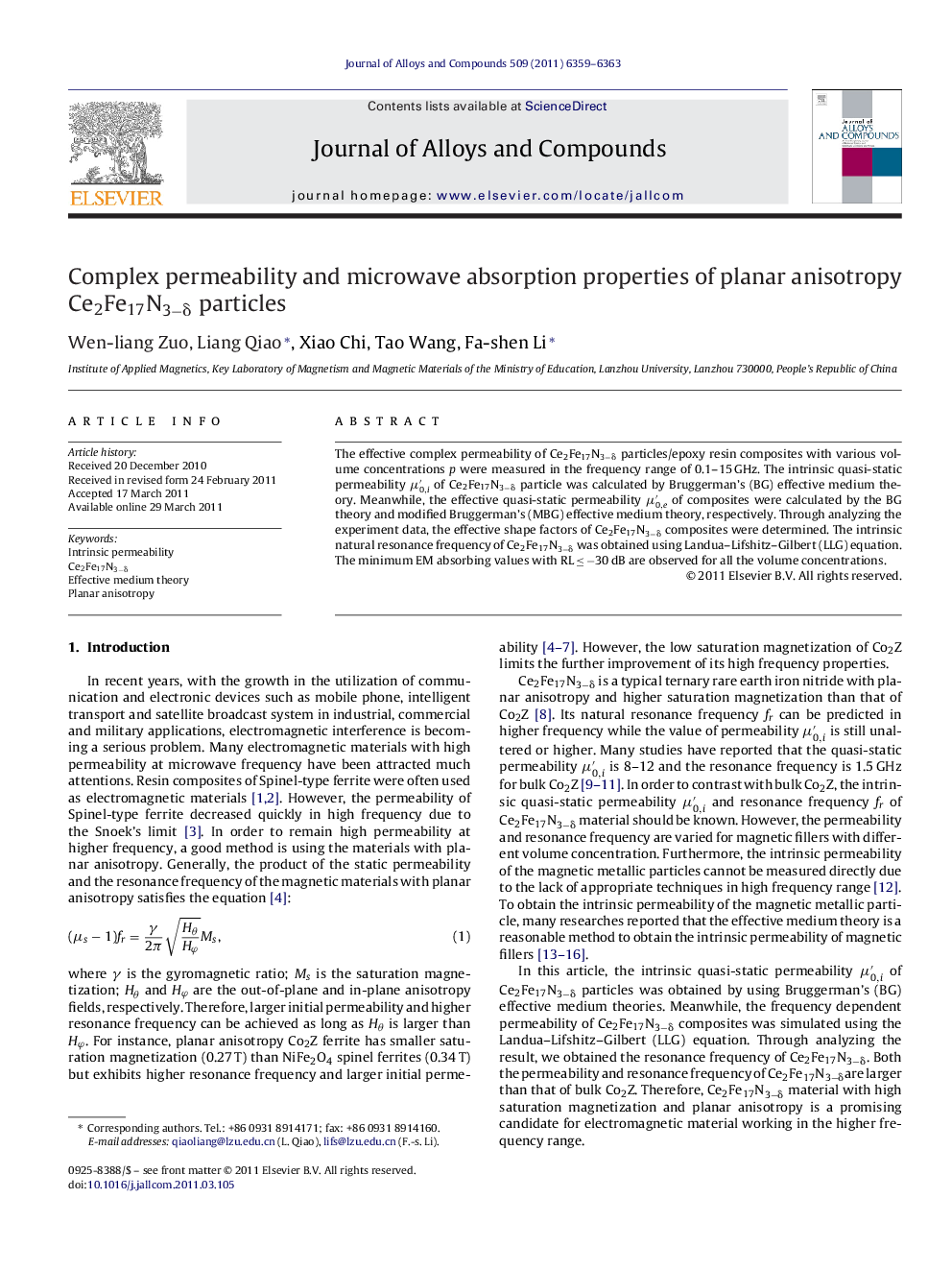| Article ID | Journal | Published Year | Pages | File Type |
|---|---|---|---|---|
| 1617541 | Journal of Alloys and Compounds | 2011 | 5 Pages |
The effective complex permeability of Ce2Fe17N3−δ particles/epoxy resin composites with various volume concentrations p were measured in the frequency range of 0.1–15 GHz. The intrinsic quasi-static permeability μ′0,iμ′0,i of Ce2Fe17N3−δ particle was calculated by Bruggerman's (BG) effective medium theory. Meanwhile, the effective quasi-static permeability μ′0,eμ′0,e of composites were calculated by the BG theory and modified Bruggerman's (MBG) effective medium theory, respectively. Through analyzing the experiment data, the effective shape factors of Ce2Fe17N3−δ composites were determined. The intrinsic natural resonance frequency of Ce2Fe17N3−δ was obtained using Landua–Lifshitz–Gilbert (LLG) equation. The minimum EM absorbing values with RL ≤ −30 dB are observed for all the volume concentrations.
► Both the intrinsic permeability and resonance frequency of Ce2Fe17N3−δ particles are larger than that of Co2Z materials. ► The theory calculated product of the static permeability and the resonance frequency is 84 GHz, which is larger than the conventional Snoek's limit 2/3γMs (27 GHz). ► The minimum EM absorbing values RL ≤ −30 dB are observed for all the volume concentrations. ► Ce2Fe17N3−δ composites have smaller matching thickness compared with Co2Z composites at the same frequency.
